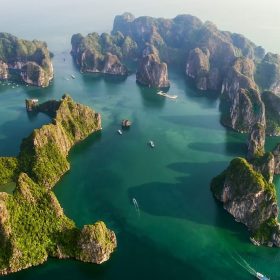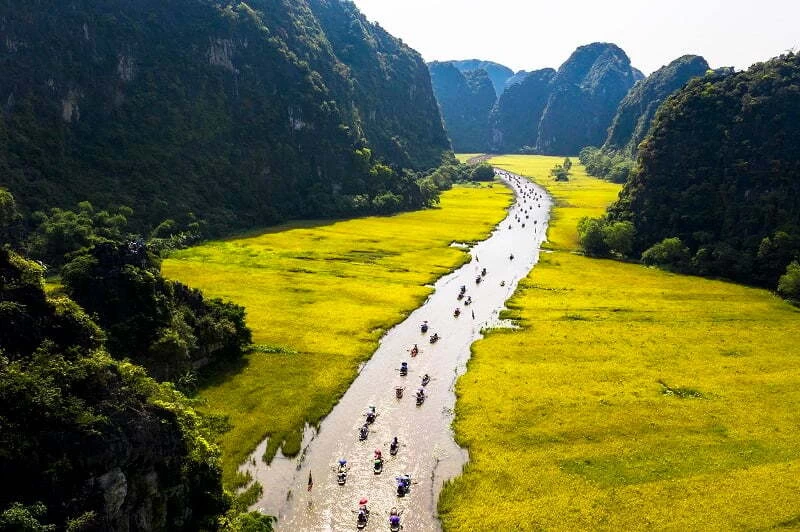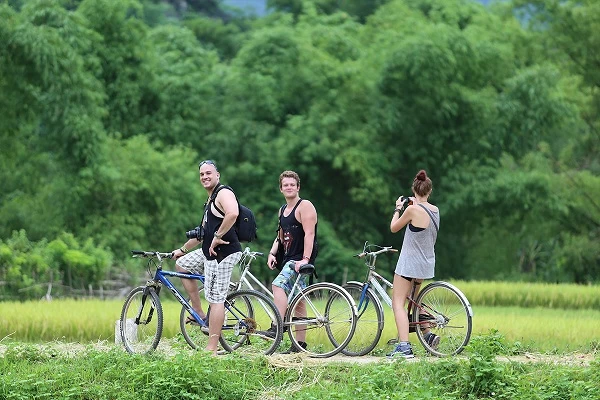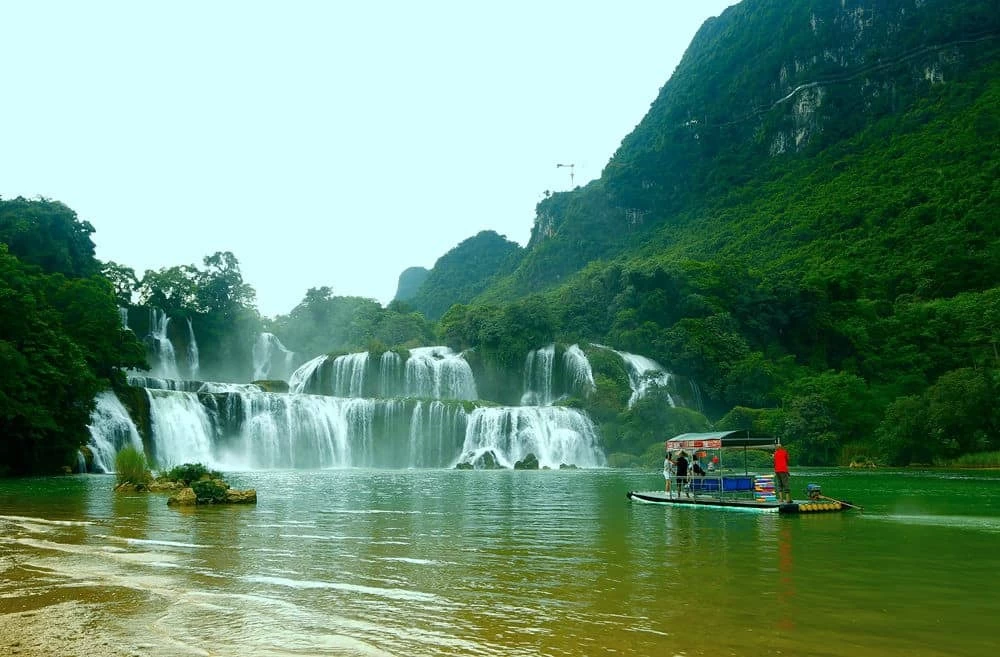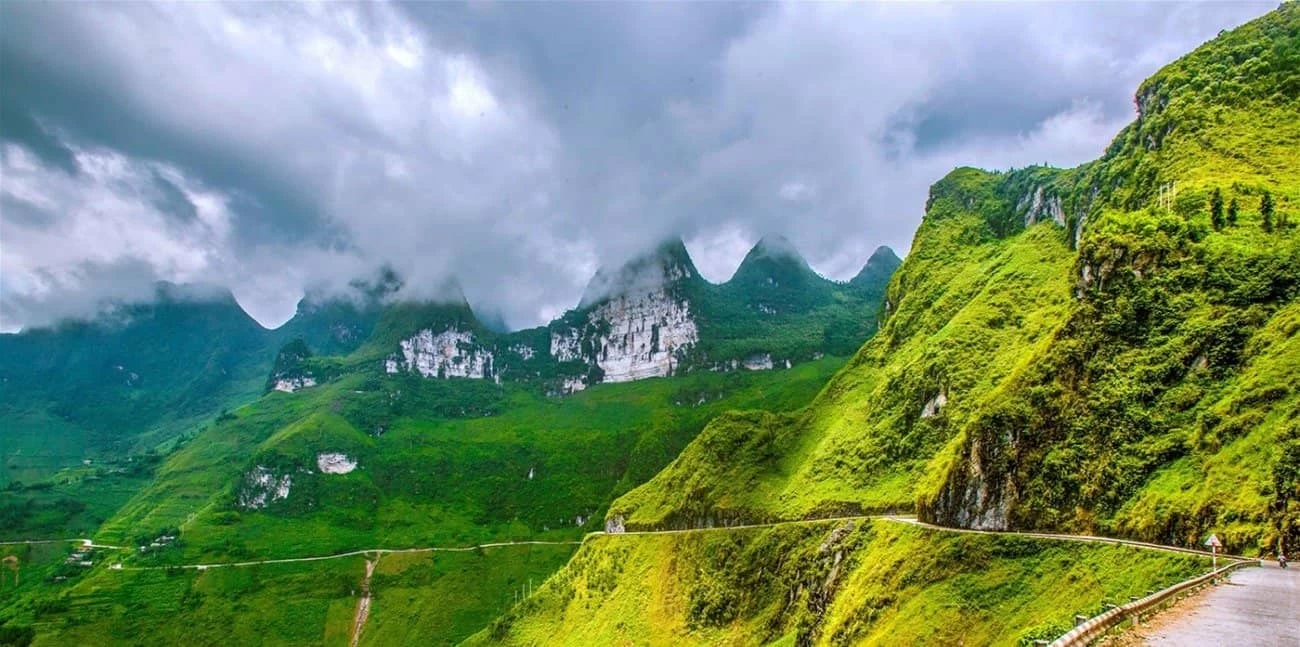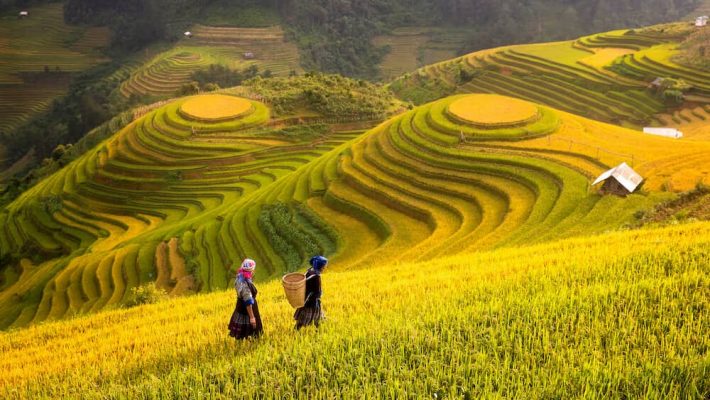
The beauty of Sapa
Sapa is not only a renowned tourist destination in Vietnam but is also home to vibrant and distinctive ethnic minority communities. When you visit Sapa, you not only discover the majestic beauty of nature but also witness the diverse and lively culture of the ethnic groups here. Let’s start exploring the fascinating aspects of the people, culture, and life in Sa Pa with Ula Travel.
I. LOCATION OF SAPA
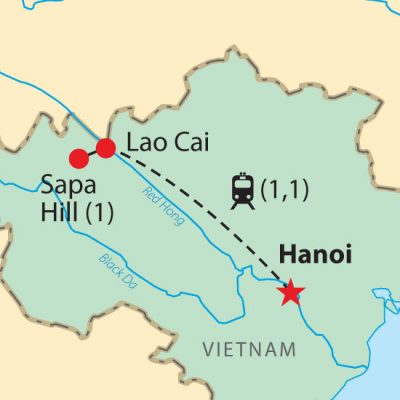
Location map of Sapa compared to Hanoi
Sapa, a renowned town in Vietnam, is located in Lao Cai province, about 350 km northwest of the capital, Hanoi. Blessed with majestic natural beauty, Sapa lies amidst towering mountains, lakes, and spectacular waterfalls, creating a magnificent natural landscape. Sitting at an altitude of around 1,600 meters above sea level, Sapa offers fresh, cool air and a mild climate year-round.
II. HOW TO GET TO SAPA FROM HANOI
From Hanoi, there are various means of transportation to reach Sapa. Here are some popular options:
Travelling by car or bus
- The journey by car or bus from Hanoi to Sapa takes about 5–6 hours, depending on traffic conditions and the type of vehicle. Several bus companies provide transportation services from Hanoi to Sapa daily.
Travelling by train
- Another option is to travel by train from Hanoi to Lao Cai station and then continue by car or bus to Sapa. The train journey offers breathtaking scenery and an exciting travel experience.
Travelling by imousine
- High-quality limousine services are also a popular choice. These vehicles are often equipped with comfort and amenities, providing a comfortable travel experience. The journey from Hanoi to Sapa is not just a trip; it’s also an opportunity for travelers to discover unique beauty spots and diverse cultures along the way.
III. THE PEOPLE OF SAPA
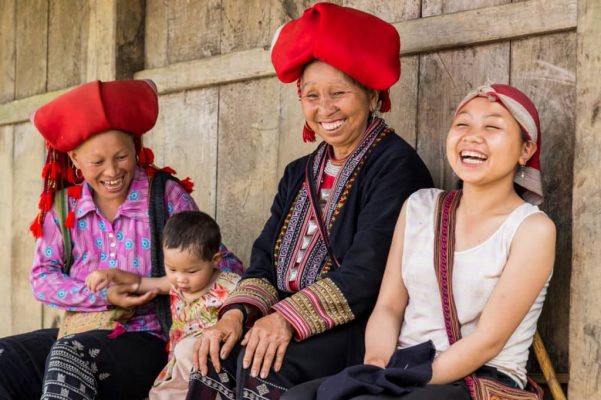
Ethnic minority community in Sapa
Upon setting foot in Sapa, you’ll be captivated by the smiles of the local people. Cheerful, warm, and full of positive energy, their smiles fill the air in Sa Pa with vitality. The ethnic communities in Sapa, from H’Mong, Dao, Tay and Black H’Mong, all share a common trait of hospitality. Travelers are not just guests but also new friends. Humorous stories and folk songs bring you closer to them, making you feel like part of the family.
One undeniable fact is that the ethnic groups are spirited, deeply rooted in the land, living authentically, and closely connected to nature. The H’Mong, Dao, Tay, and other ethnic groups contribute to the diverse and rich beauty of the town.
IV. DISTINCTIVE CULTURE OF SAPA
The cultural diversity of the ethnic groups is also reflected in their traditional costumes, depicting the cultural richness of Sapa. These costumes are not only symbols of ethnic culture but also vivid paintings of Sapa‘s diversity and spiritual wealth. The culture in Sapa is not just about unique festivals but also a harmonious blend of joyfulness and respect for traditions. Each ethnic group has its own distinct cultural features, from traditional costumes to customs and traditions.
Festivals like the Cloud Bridge Festival and the “Meeting of Ethnic Groups” provide opportunities for travelers to participate in fun activities, experience unique ethnic cultures, and immerse themselves in the lively festival atmosphere. Living immersed in the indigenous life is not just an experience but also an opportunity to understand the lifestyle of ethnic people better. Travelers can participate in daily activities such as handicraft making, rice planting, and even cooking traditional meals with families.
The small ethnic villages, nestled under the shade of ancient forests, are the homes of traditional families engaged in farming, animal husbandry, and weaving, forming the foundation of their lives. Travelers to Sapa cannot miss the opportunity to experience the lives of ethnic groups by staying in homestays, participating in their daily activities, and learning about their traditional culture through the stories of the people.
Learn more about: Hanoi to Sapa tours
V. BEST TIME TO VISIT SAPA
The most beautiful seasons for tourism in Sapa are usually autumn and winter. Below is a description of both seasons:
1. Autumn (September–November)
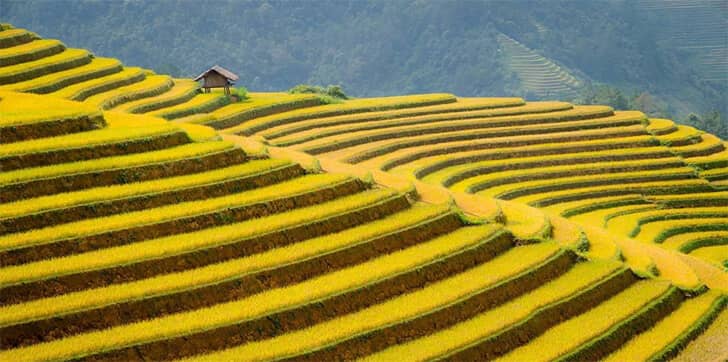
Autumn in Sapa
Autumn in Sapa typically starts in September and lasts until November. During this time, Sapa is immersed in the shimmering yellow color of ripe terraced rice fields. The beautiful scenery of the golden rice fields and green trees under the yellow sunlight creates a wonderful painting that captivates people’s hearts.
2. Winter (December–February)
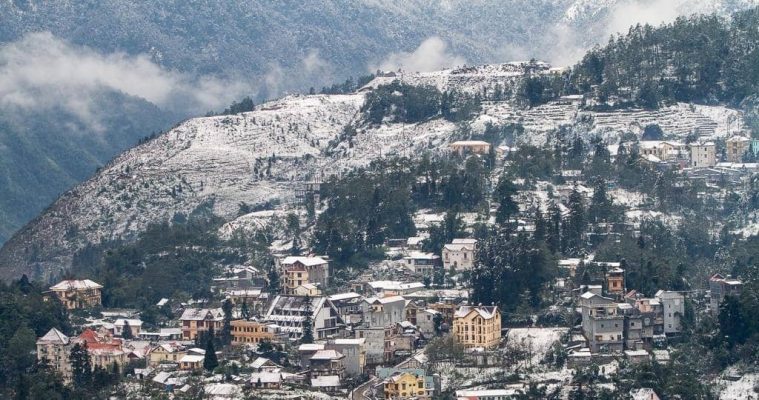
Winter in Sapa
Winter in Sapa brings a chilly and harsh atmosphere, but also a very romantic one. The harvested rice fields create a mysterious look with the grass and trees covered in fog. Additionally, you might witness a light covering of white snow, making Sapa even more mystical and romantic.
Depending on personal preferences and desired experiences, you can choose autumn to admire the beauty of the golden terraced fields or winter to experience the cold atmosphere and feel the romance of Sapa on frosty days.
Start your journey with: Hanoi to Sapa Private Tour
VI. ATTRACTIVE DESTINATIONS IN SAPA
1. Fansipan Peak, “The Roof of Indochina,”
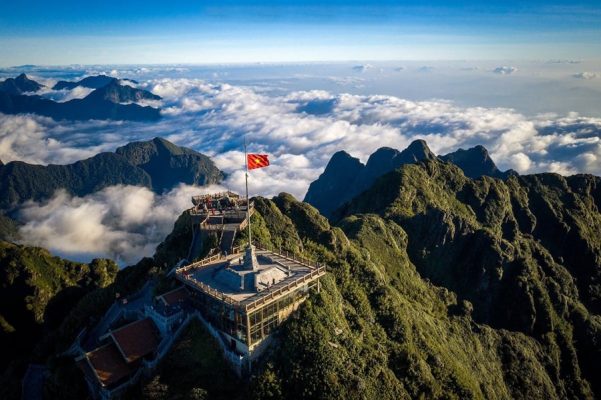
Fansipan Peak
A visit to Sapa would be incomplete without climbing Fansipan Peak, known as the “Roof of Indochina,” standing at an altitude of 3,147 meters above sea level. Climbing the mountain is a challenging experience, especially if you’re an avid mountaineer. Prepare yourself mentally and bring warm clothing, as the weather here changes as frequently as the moods of a lover.
Do not miss: Sapa Tour from Hanoi 7 Days
2. Silver Waterfall: “The Silver Cascade”
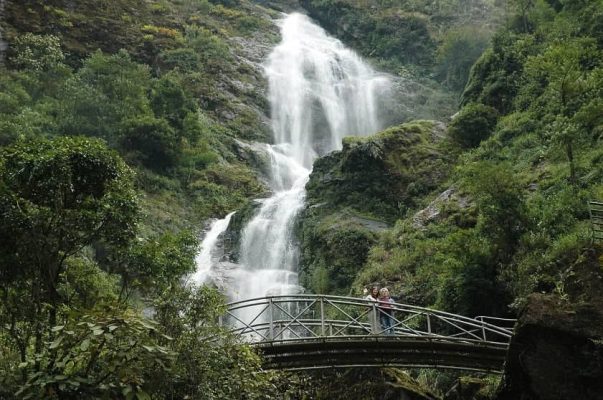
Silver Waterfall
Silver Waterfall, also known as Thac Bac, is a natural masterpiece nestled amidst the mountains of Sapa. With its cascading silver water resembling cigarette smoke, Silver Waterfall is an ideal spot for indulging in some photography and proving that even water can be as graceful as the Sapa girls.
Click here: Northern Vietnam Wonders
3. Cat Cat Village: “The Graceful Mountain Girl”
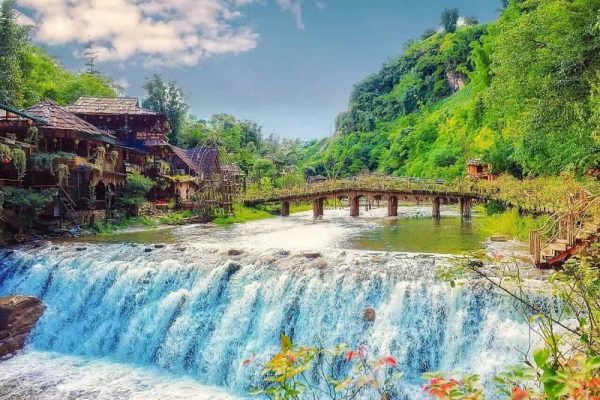
Cat Cat Village
Cat Cat Village is not only a historical site but also a place where you can learn about the traditional culture of the H’Mong ethnic group. Try on traditional costumes, and you’ll feel like a graceful “H’Mong girl” amidst the Sapa mountains. This feeling might even make you consider switching careers from an office worker to a village model.
4. Sapa Lake: “Relaxing by the Lakeside”
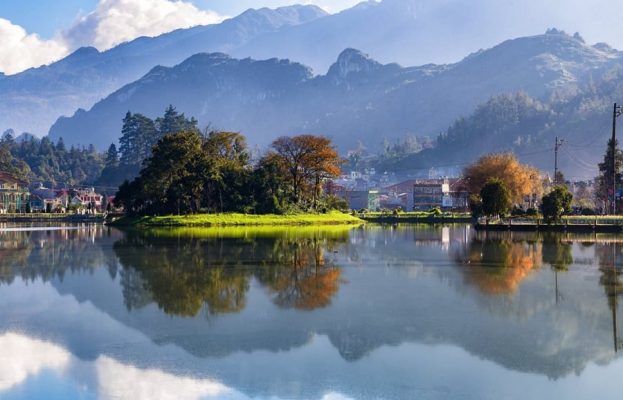
Sapa Lake
If you want to enjoy fresh air and witness the mystical beauty of nature, Sapa Lake is the perfect destination. It’s not just a place for fishing; it’s also an excellent choice for immersing yourself in the clear blue water and experiencing the unique flavor of the local sticky rice wine.
5. O Quy Ho Pass: “Challenge for Mountain Racers”
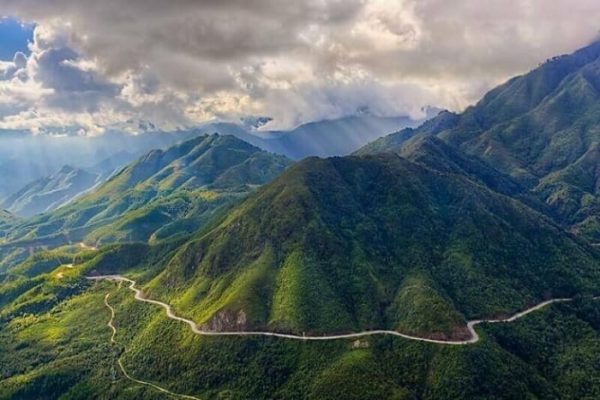
O Quy Ho Pass
If you love winding roads and challenges, test your skills on the O Quy Ho Pass. The summit is not only a suitable place to showcase your driving skills but also an opportunity to appreciate the majestic beauty of Sapa from the highest point.
You might be like: Northern Vietnam Itinerary
6. Bac Ha Market, “Colorful Gathering Point”
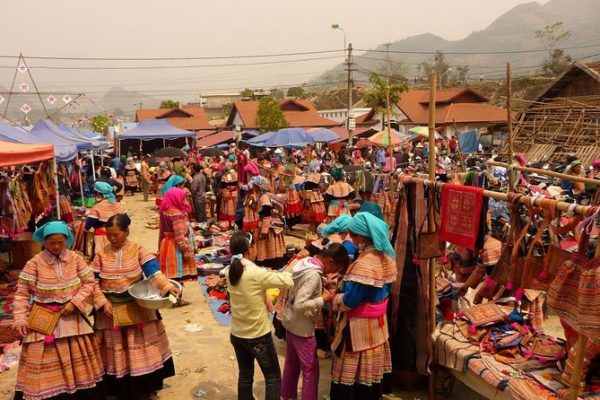
Bac Ha Market
A trip to Sapa wouldn’t be complete without visiting Bac Ha Market, a characteristic feature every Sunday. It transports you to the world of ethnic shopping. Here, you can snag unique H’Mong dresses, familiar conical hats, and most importantly, immerse yourself in the colorful highland culture.
Read more: Hanoi to Bac Ha Market Tour
7. Ham Rong Mountain: “Let Loose in the Dream Realm”
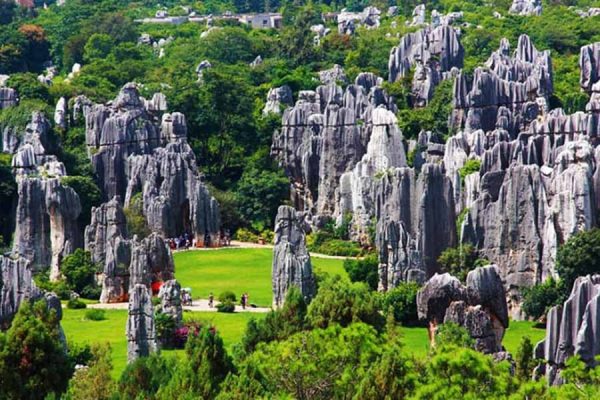
Ham Rong Mountain
Ham Rong Mountain is not just a place to enjoy the peacefulness of nature; it’s also a venue for various events and entertainment activities. Prepare to let loose at events like the Cloud Boat Racing Festival or the Unique Light Festival.
8. Can Cau Market
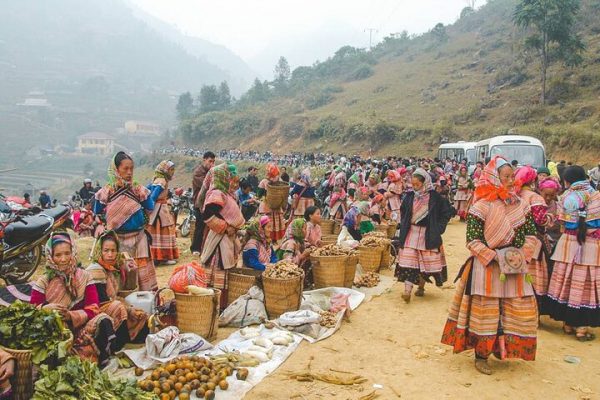
Can Cau Market
Can Cau Market, located in Si Ma Cai district, stands out from other tourist destinations in Lao Cai province by retaining the inherent characteristics of the highland ethnic people after many years.
This weekly market on Saturdays in the H’Mong, Hoa, Giay, and Dao communities attracts tourists to explore the life and cultural beauty of the highland people through trading activities and meeting couples.
9. Sapa Love Market
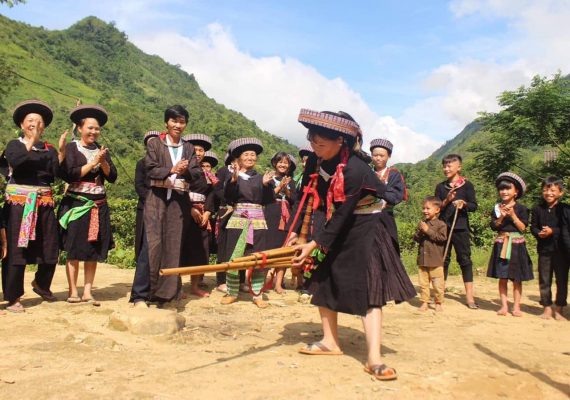
Sapa Love Market
Sapa Love Market is a market that isn’t really a market because you won’t see anyone selling or buying anything. It’s one of the tourist destinations in Sapa where couples can exchange affection and seek their life partners.
Ethnic girls often dress in traditional attire with bracelets, necklaces, earrings, headscarves, and baskets on their backs. Young men also wear traditional or colorful Cham outfits. Some carry bamboo flutes, while others carry wine, gathering joyfully at the market.
10. Ta Phin Village
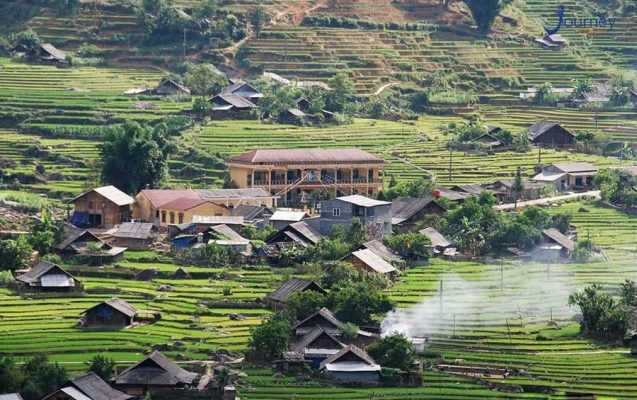
Ta Phin Village
Ta Phin Village is a must-visit for travelers who want to explore the pristine nature of Sapa. About 12km from the town center towards the northwest, the village attracts visitors with its fresh natural landscapes mixed with rustic charm and rich ethnic culture.
Here, you’ll discover and learn about the daily life and customs of the ethnic people. Famous ceremonies shape the identity of this land, like the Bai Tram dance, wedding rituals, and love singing. Moreover, Ta Phin is famous for its meticulously designed handicrafts. It’s an excellent choice for tourists to buy gifts for friends and relatives.
11. Y Linh Ho Village
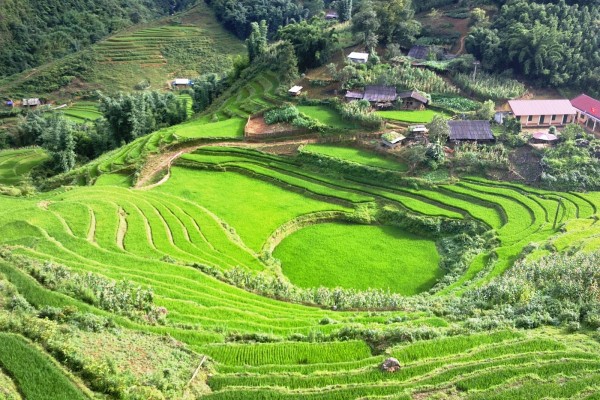
Y Linh Ho Village
To reach Y Linh Ho Village from Sapa town, travelers head towards Lao Chai village. After passing Lao Chai village, about 3km at the foot of the hill, visitors will see the wild and romantic Y Linh Ho village on the mountainside.
Y Linh Ho Village attracts visitors with its pristine and poetic beauty. Surrounded by the Hoang Lien Son mountain range, it features streams, terraced fields, and traditional stilt houses, reflecting the simple, rustic life of the locals.
12. Lao Chai- Ta Van Village
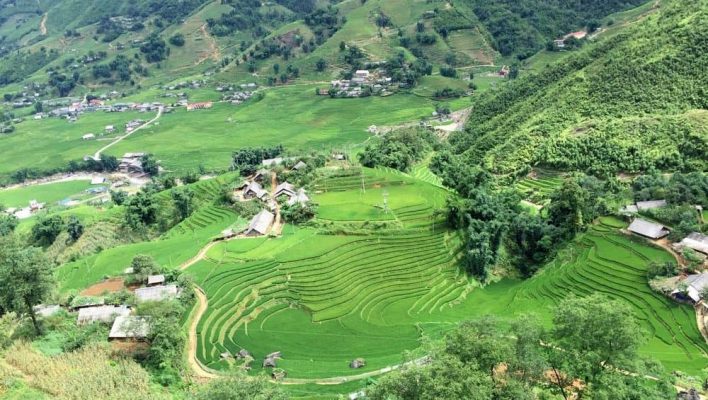
Lao Chai- Ta Van Village
From Sapa town, travelers wanting to visit Lao Chai- Ta Van village can move along Cau May Street and Muong Hoa. Then continue along the trail on Y Linh Ho Hill to Lao Chai. If you choose to walk, it will take more than three hours to move from the town to this place. You can also use motorcycles and cars if traveling with family or friends.
Visiting Lao Chai- Ta Van Village, tourists will be attracted by the unusually quiet space. The most prominent feature is still the terraced fields of rice cultivation, where colorful flowers spread across the hillsides. Especially if you visit during the harvest season, around April or September of the year, tourists will have the opportunity to admire a majestic landscape of the mountains and terraced fields of ripening rice on the terraced fields. They all create a colorful picture of nature.
VII. EXCITING ACTIVITIES IN SAPA
1. Trekking through Villages
Trekking in Sapa is one of the most rewarding ways to experience the area’s breathtaking landscapes and cultural diversity. Popular trekking routes include exploring Lao Chai, Ta Phin Village, and the picturesque Muong Hoa Valley. These routes lead through terraced rice fields, lush hills, and tranquil rivers, offering stunning views at every turn.
2. Visiting Ethnic Villages and Learning about Local Life
Many villages are open to visitors, where travelers can see traditional wooden homes, colorful clothing, and local crafts. Each community has its own unique customs, language, and artistic styles. For example, the Red Dao people are known for their distinctive red scarves and intricate embroidery, while the Black H’mong often wear dark, indigo-dyed clothes.
3. Red Dao Herbal Bath
One of the most unique experiences in Sapa is the Red Dao herbal bath. This traditional practice, unique to the Red Dao people, uses a mixture of healing herbs gathered from the surrounding mountains.
The herbal bath involves soaking in a large wooden tub filled with hot water and various wild herbs, which are said to relieve muscle pain, improve circulation, and reduce stress. After a day of trekking, this soothing experience provides a rejuvenating way to relax and unwind.
VIII. TRAVEL TIPS FOR VISITORS
To have the best experience here, let’s explore 7 travel tips when discovering to Sapa below. Don’t forget to learn more about Sapa travel experiences before setting foot in this land to avoid confusion.
- Tip 1: Regarding the customs and traditions of the Sapa ethnic groups
Before visiting the homes of ethnic people, travelers need to observe carefully. If you see green leaves placed in front of the door, at the head of the stairs, or hanging a branch with thorns or a woven plate with a fox eye pattern, those are taboo signs. The family does not want strangers to enter the house.
There are many taboos related to the kitchen fire, such as not sitting next to the fire without putting your feet up or using a stone as a footstool. When bringing firewood into the kitchen, do not bring the tip in first because of the belief that the future daughter of the host will give birth backwards. When sitting near the kitchen, tourists should not turn their backs and step on the kitchen.
People here refrain from whistling indoors, as it is a signal for ghosts and storms. Do not touch the heads of Mong and Dao children, as according to their beliefs, the soul resides in the head; touching it will scare the soul away, making the child sick. Before eating, you should patiently listen to the host’s rituals, inviting ancestors and blessings.
- Tip 2: Bring sufficient personal belongings and warm clothes when traveling to Sapa because the weather is unpredictable.
If traveling in the summer, remember to bring mosquito repellent and insect repellent. especially if you have clothes at home. If you don’t need shoes, please bring them up to Sapa to hand them over to the children of the ethnic groups.
- Tip 3: Prepare a strip of motion sickness medication in advance to prevent women from getting motion sickness. Otherwise, you may have a green face and yellow bile because the road is very winding.
- Tip 4: Take some time to learn about Sapa. When you arrive, choose reliable people and addresses to ask to avoid being taken advantage of by some first-time visitors who provide false information to pick the pockets of tourists.
- Tip 5: If you want to buy ethnic items, prepare the exact change as they will not have change. And remember not to give money to children when entering the village because there will be many children coming and asking for money. Choose one or two children that you value to guide you, and there won’t be many children following you anymore.
- Tip 6: Remember to carry valuable items with you. When traveling anywhere, don’t forget to bring personal documents such as an ID card, a driver’s license, etc.
- Tip 7: Before taking photos of the elderly, ask first to see if you have to pay or not so you don’t waste time. But the experience is to give them a little, whether little or much, after taking pictures of them.
In conclusion, Sapa is not only an ideal destination for adventure enthusiasts but also a paradise to “upgrade” your mental health and enjoy the unique beauty of the cloudy mountainous region. Start your journey and let Sapa capture your heart!
See more: Sapa travel tips



